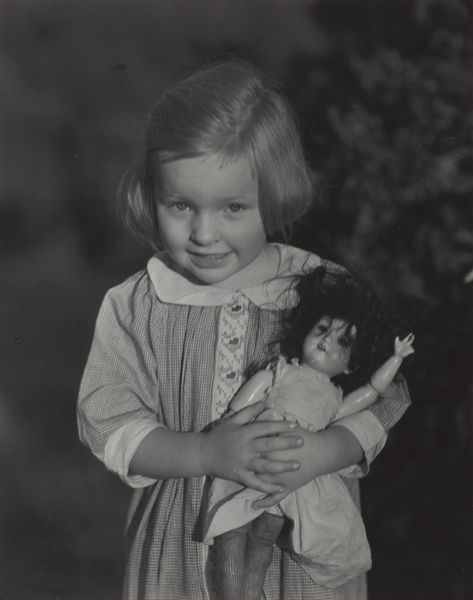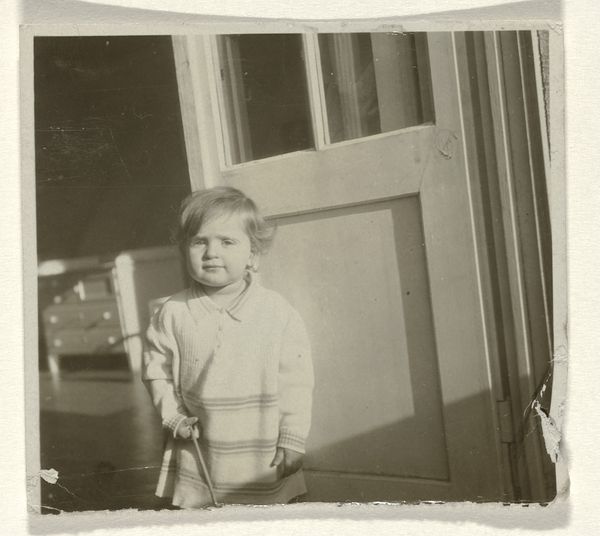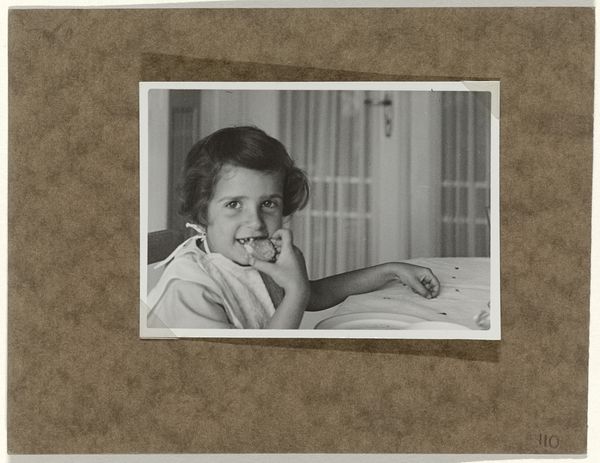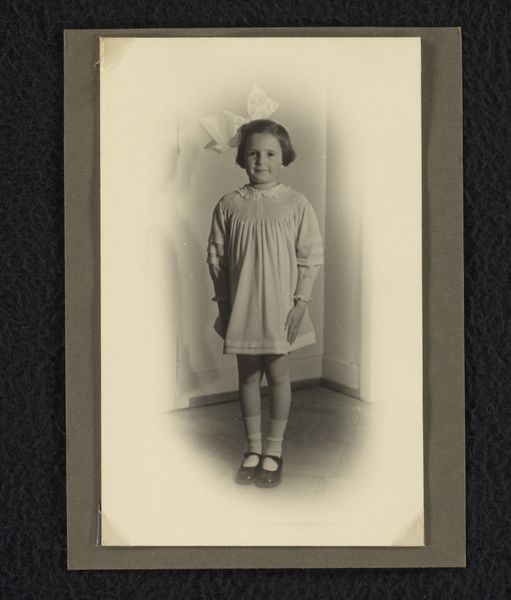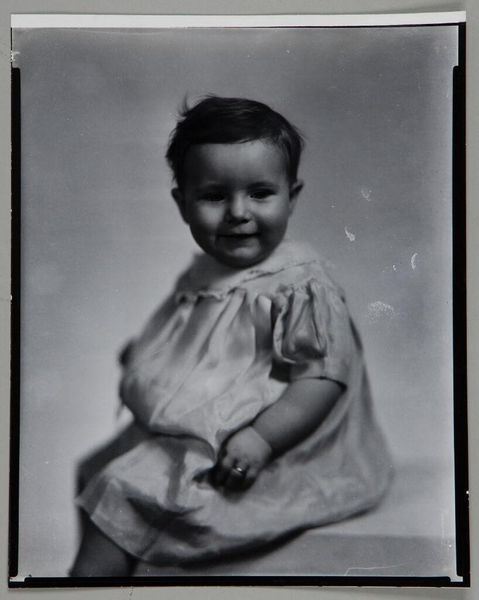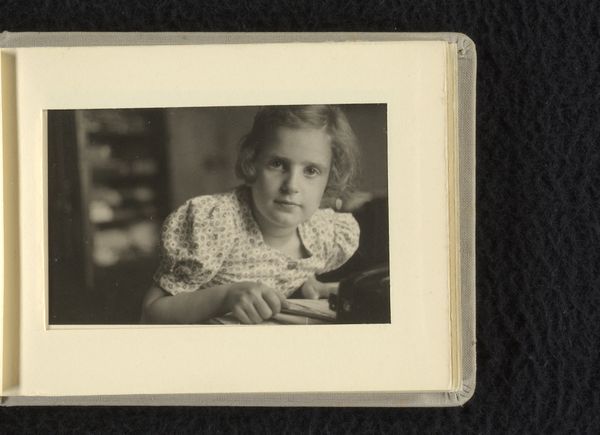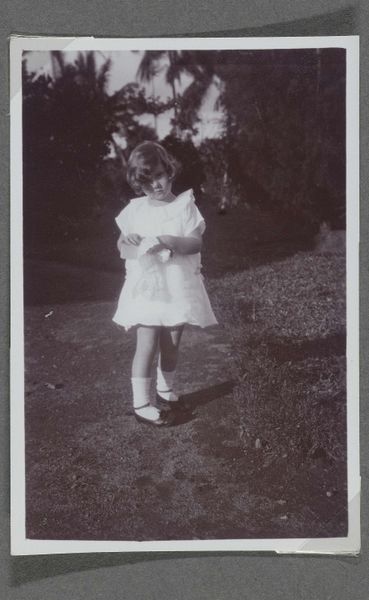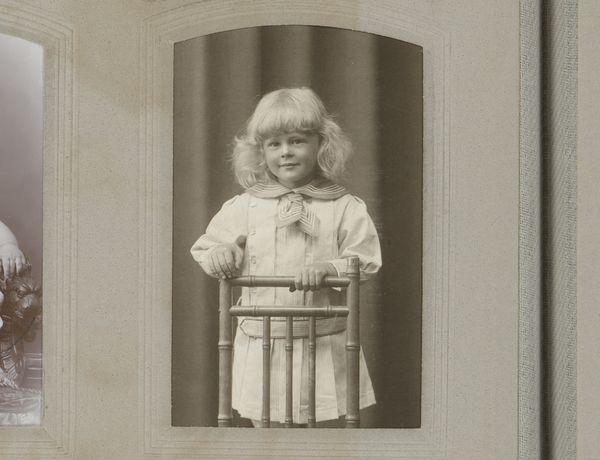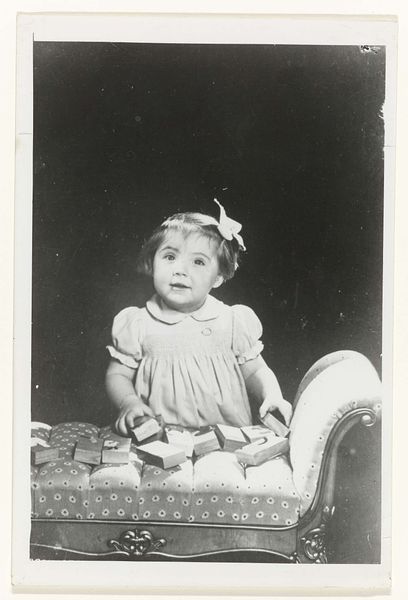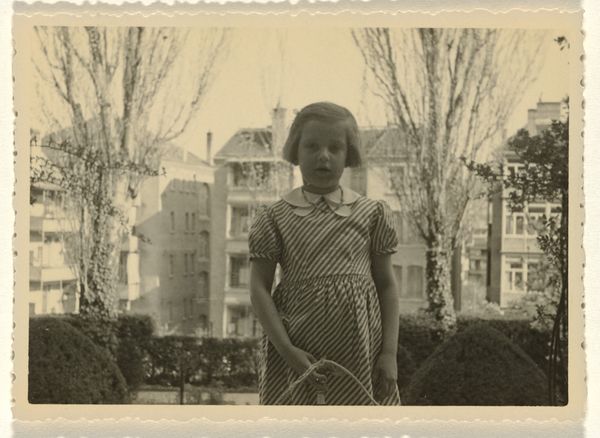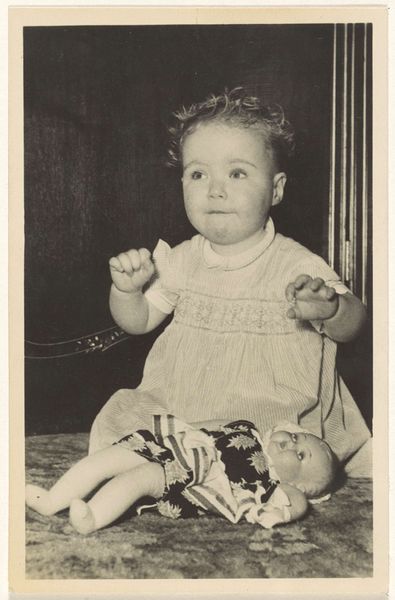
Dimensions: sheet: 18 x 23.8 cm (7 1/16 x 9 3/8 in.)
Copyright: National Gallery of Art: CC0 1.0
Curator: This photograph, taken by Robert Frank in 1949, is titled "Children playing, Italy." Editor: There's an immediate, innocent joy radiating from the young girl’s direct gaze. It’s a poignant moment captured so simply. Curator: Frank’s work often navigates the complexities of postwar society. Consider how this image of children at play in Italy situates itself within a broader historical narrative. What do we know about this moment in the history of Italian childhood, shaped by trauma, resilience, and changing social structures? Editor: It certainly evokes a sense of resilience, but also points towards larger discourses of power, particularly concerning gender and representation. How are children, and particularly young girls, constructed and idealized within these images, and who benefits from those constructions? This seemingly simple shot engages with socio-political narratives. Curator: The choice of black and white enhances the sense of timelessness and nostalgia. It could almost be from any era, yet its presence in 1949 carries specific weight when understanding this era of cultural memory, when photography helped construct shared social narratives. Editor: But beyond its documentary appeal, how might we understand this image within contemporary contexts of privacy and consent, given the evolving power dynamics between photographer and subject, especially with children? Frank may be presenting social observations, but our reading through the lens of today may critique it through an ethical lens, reflecting the impact and cultural implications it creates for viewers from different standpoints. Curator: True, our perception changes over time, doesn't it? Examining images such as "Children Playing, Italy" makes clear the critical relationship between how cultural perceptions change and how they shape the social value we attach to works like these. Editor: Precisely, and interrogating those intersections is key to a deeper appreciation and reckoning with art's ongoing social and cultural influence.
Comments
No comments
Be the first to comment and join the conversation on the ultimate creative platform.
